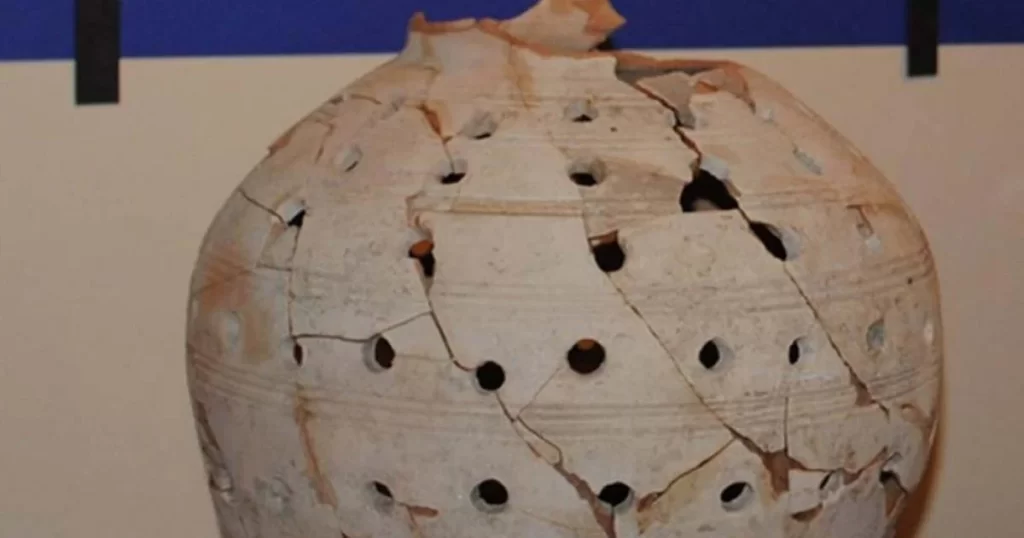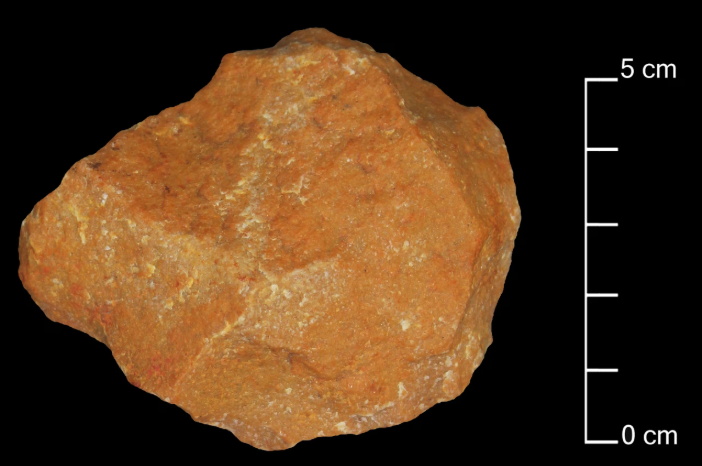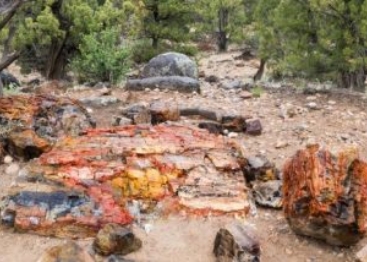10 Unbelievable Archaeological Objects That Shocked Scientists
Archaeology never fails to remind us just how bizarre and fascinating our world can be. While many discoveries fit neatly into the historical timeline, others are like puzzle pieces from a different box—mysterious, out of place, and often leaving us with more questions than answers. Even when we think we’ve figured out the “when” or the “how,” some artifacts still manage to defy explanation, their stories shrouded in enigma.
Take, for instance, a hammer found embedded in ancient rock, or a treasure map that no one can quite decipher. Then there are manuscripts written in scripts so cryptic that even the best linguists are stumped. And let’s not forget the ancient cave paintings that seem to tell stories we can’t fully understand, or the perfectly round stone balls scattered across the globe, their purpose still a mystery. Even the preserved bodies of bog people, eerily intact after centuries, raise more questions about their lives and deaths than we can answer.
These aren’t just random objects—they’re glimpses into a past that feels both familiar and alien. They challenge our understanding of history and make us wonder: What else is out there, waiting to be discovered? Whether it’s a relic that seems impossibly out of place or an artifact that defies logic, these finds remind us that the past is far stranger than we often imagine. So, if you’re someone who loves diving into the weird and wonderful, archaeology has no shortage of tales to keep you hooked.
10.The London Hammer
In 1936, a group of hikers stumbled upon something truly bizarre in London, Texas: what looked like an 1800s-style hammer completely encased in rock. The kicker? The rock surrounding the hammer is estimated to be nearly 100 million years old. Naturally, this discovery sparked all sorts of wild theories. Some suggested it was evidence of time travel, while others, particularly creationists, claimed it was an “out of place artifact”—a mysterious object that seems to defy the known timeline of human and geological history. Today, the hammer is proudly displayed at the Carl Baugh Creation Evidence Museum in Glen Rose, Texas, where it’s presented as proof that the fossil record might be flawed.
But here’s the thing: it’s not.
Despite the dramatic claims, the truth is far less sensational. In 1985, researcher John Cole from the National Center for Science Education (NCSE) debunked the myth. He explained that while the rock looks ancient and impressive, it’s entirely possible for mineral solutions to harden around an object left on a rocky surface or dropped into a crack. In this case, the rock in question—Ordivician rock—is highly water-soluble, meaning it can form around objects relatively quickly under the right conditions. So, the hammer likely belonged to a worker from the 1800s who accidentally dropped it, and over time, nature did the rest.
That said, the real mystery isn’t how the hammer ended up in the rock—it’s how the story of the hammer became so entangled with conspiracy theories and wild speculation. In a way, the tale of the hammer is a fascinating example of how easily facts can be twisted into something far more intriguing, even if the truth is a bit more mundane. It’s a reminder that sometimes, the most incredible stories are the ones we create ourselves.
So, while the hammer might not be proof of time travel or a rewriting of history, it’s still a curious little artifact that sparks the imagination. And who knows? Maybe the real story behind it is even more interesting than the myths.
9.The Copper Scroll Treasure
The Copper Scroll is one of the famous “Dead Sea Scrolls” discovered in 1947 by Bedouins who were spelunking in the caves surrounding the Dead Sea. The tablet is interesting because it seems to detail the locations of 67 different treasures, weighing in at 160 tons of gold and silver. All of the Dead Sea Scrolls date back to the second century C.E., but what’s strange about the Copper Scroll is that the other 14 discovered in the caves were written on forms of parchment.
If the treasure turns out to be real, the Copper Scroll would represent the map to the largest collection of treasure in recorded history.
But where would all that treasure come from? Historians think it would likely have belonged to Jerusalem’s Second Temple which was built between 516 B.C.E. and 70 C.E. The Romans retaliated against the rebelling Jews in 70 C.E., ransacking and destroying the temple.
The treasure itself was likely hidden by Essene priests.
There is a final, 64th clue on the Copper Scroll, detailing the location of a second version of the scroll with further instructions called the “Silver Scroll.” This Silver Scroll has never been found, but archaeologists are still hunting for it.
8.Voynich Manuscript

The Voynich Manuscript was first discovered in 1912 and its discovery baffled everyone who looked upon its pages, at least until recently. It appeared to be written in an unknown language, featuring pictures of alien plants, and is filled with zodiac symbols.
It’s thought that it was made in the 15th century, and sold to the Holy Roman Emperor, Rudolph II of Germany, who claimed to have obtained the manuscript for 600 gold ducats. Rudolph II thought the mysterious text to have been the work of Roger Bacon, but its authorship remains unknown.
The Voynich Manuscript has been fully scanned and uploaded to Yale’s Beinecke Library, where users can explore its pages for themselves.
Recently Historian and TV writer Nicholas Gibbs claimed to have finally deciphered the artifact’s mysterious code. According to Gibbs, the manuscript is written in a medieval shorthand and appears (post-translation) to be a women’s health document. Gibbs also suggests that this manuscript was plagiarized from a variety of other sources.
7.The Cochno Stone: A 5,000-Year-Old Mystery That Still Baffles Experts
Have you ever stumbled upon something so ancient and enigmatic that it leaves you questioning everything you thought you knew about history? The Cochno Stone is one such artifact—a massive slab of rock adorned with mysterious cup and ring markings that date back over 5,000 years. Discovered in 1887 by Rev. James Harvey near Glasgow, Scotland, this prehistoric relic has puzzled archaeologists, historians, and curious minds alike for over a century.
What makes the Cochno Stone so fascinating isn’t just its age, but the sheer mystery surrounding its purpose. The stone is covered in intricate carvings—small circular depressions (cups) surrounded by concentric rings. While some believe these markings could be linked to ancient astronomical events, like eclipses or solstices, others argue they might simply be artistic expressions with no deeper meaning.
Here’s where the story gets even more intriguing. By the 1960s, the stone had suffered significant damage—both from natural erosion and human interference. To protect it, archaeologists made the decision to bury it underground. But in 2016, the stone was unearthed once again, and this time, researchers used advanced 3D imaging and photography to capture every detail of its surface.
What they found was astonishing. Beyond the prehistoric carvings, the scans revealed layers of history etched onto the stone—19th and 20th-century graffiti, including painted markings by Ludovic Maclellan Mann, an archaeologist who studied the stone in the 1930s. Mann was convinced the carvings held astrological significance, but his theories remain unproven.
Despite decades of research, the true meaning of the Cochno Stone’s markings remains a mystery. Some experts even question whether there’s any meaning to decipher at all. After all, isn’t it possible that ancient humans created art simply for the sake of expression?
The Cochno Stone is a reminder that not everything from the past comes with an explanation. Sometimes, the most captivating stories are the ones that leave us wondering. What do you think—could these carvings be a map of the stars, a spiritual symbol, or just an ancient artist’s doodle? Share your thoughts below!
This ancient artifact is a perfect example of how history can be both incredibly informative and utterly baffling. It’s a piece of the past that continues to spark curiosity and debate, proving that some mysteries are timeless.
6.The Holey Jar

It might not look like much, but since it was reconstructed at a Canadian museum, this holey jar dating back to the Roman Empire has baffled every archaeologist who has examined it. Suggestions for what it could have been used for range from a crude lamp, a container for very large snakes, and even a place for ancient Roman homemakers to store delicious door mice.
The problem with the jar is that it just doesn’t match other jars dating back to the same period of time (about 1800 years). Some archaeologists believe it may have originated from Roman Britain dating back to around 43 to 410 C.E., and that it was gifted to the museum with some other artifacts in the 1950s by William Francis Grimes, whose team had dug up several artifacts in that same area after World War II. Though, no one can confirm whether or not the artifact was from the same dig. Frankly, the museum has no idea how the artifact became part of their collection.
And so the holey jar remains a mystery.
5.Advanced Stone-age Tools Found in India

The discovery of more than 7,000 stone tools in India dating back 300,000 years completely changed the narrative of when Levallois technology (a particular method of developing stone tools by prehistoric hominins) made its way to the region. This is 250,000 years earlier than archaeologists originally thought.
The discovery itself was made in 1999 by two archaeologists from the Sharma Centre for Heritage Education in Chennai, beginning their excavation at a site about 60 kilometers from their main building.
Not only is it unknown how this technology for creating stone tools was introduced to India at this time, but it’s also unknown why the site where the tools were discovered was abandoned around 74,000 years ago.
The artifacts are also very similar to Middle Stone Age tools made in Africa and Europe and some scientists think the tools were made by an ancestor of Neanderthals called Homo heidelbergensis, but no one is certain.
4.The Incredible 6-Inch “Alien” Mummy
Ancient alien conspiracy theorists and tin-foil hat aficionados everywhere lost their collective minds in 2003 when a six-inch mummy with a cone-shaped head was discovered in Chile’s Atacama Desert. The mummy’s features do admittedly bear striking resemblance to pop-culture representations of what aliens might look like.
Although the mummy is only about as large as a human fetus, its bones are actually as mature as a six-year-old child’s! Amazingly, x-ray and CT scans revealed that the mummy (named Ata) is completely human.
But how could a six-year-old be so small?
To answer this question, Ata was taken to Atul Butte’s team at the University of California, San Francisco. There they analyzed Ata’s genome. Their study revealed mutations in several of Ata’s genes, all of them pertaining to human growth.
The team at UCSF now thinks that Ata is a mummified stillborn fetus, but one whose genetic mutations caused her bones to rapidly grow.
3.Otzi the Iceman
Otzi the Iceman was discovered by a German tourist in 1991 in the Otzal Alps. Subsequent radiocarbon dating revealed that Otzi’s mummified corpse dated back to 3300 B.C.E., and the body belonged to a man of 25-35 years of age with a ton of health issues. The Iceman’s stomach was full the eggs belonging to parasitic worms, his arteries were hardened, his joints worn, and his gums diseased. He also had gallstones, and the scientists who studied him also think he might have had Lyme disease.
Though it is interesting to note that the Iceman’s body was tattooed using a technique requiring him to cut into his own skin and rub charcoal in his wounds. This is a practice that, before Ötzi, was thought to have originated 2000 years later.
The cause of death seemed to have been a blow to the head, but Ötzi did have an arrowhead lodged in his shoulder.
How Otzi came to be there in the Alps, though, is a bit of a mystery. However, some researchers suggest that he might have fled into the Otzal Alps after being shot, scaling Schnalstal, rather than the other valleys in the area, where he would have eventually died from blood loss, only to be covered by glaciation and preserved for modern humans to discover.
However, how accurate this reconstruction is, is up for debate, since there’s a lot we can’t reconstruct, given how old Ötzi’s mummified remains are.
2.The Tollund Man
Discovered in 1950 after a group of Peat diggers (a fossil fuel only found in bogs) stumbled upon his body in the Bjaeldskovdal bog in the middle of Denmark, Tollund Man, as he’s come to be known, is the incredibly well-preserved remains of a man who lived 2300 years ago. What’s strange about him is that his body has basically mummified, his skin becoming extremely rubber-like and changing color to a deep olive. Tollund Man was discovered in the bog, lying in the fetal position with a plaited leather thong wrapped about his neck, which researchers believe is the thing that killed him.
While the cause of death is certain, scientists and archaeologists aren’t sure why. Tollund Man has gotten around in the years since his discovery, and scientists at various universities have used machines like dual-energy CT scanners, and strontium tests, and are even attempting to sample his DNA to uncover more of his secrets.
Many researchers think ritual sacrifice is the most likely reason for Tollund Man’s death, but he isn’t the only “bog body” to be discovered in Northern Europe. While Tollund Man is the most well-preserved of these “bog bodies” researchers are hoping that together, their remains can help tell the story of why these people were killed.
1.Las Bolas (The Balls)
Costa Rica is home to one of the world’s most intriguing mysteries: Las Bolas, a collection of massive stone spheres scattered across the country. These enigmatic artifacts range in size from just a few centimeters to towering heights of nearly 2.5 meters, with the heaviest weighing an astonishing 15 tons. To date, nearly 300 of these stone balls have been discovered, yet their origins and purpose remain shrouded in mystery.
Historians and scientists estimate that these spheres were crafted between 200 and 1500 C.E., but the identity of their creators and the reasons behind their creation are still unknown. This lack of concrete information has fueled countless theories and legends, making Las Bolas a fascinating topic for both researchers and curious minds alike.
One of the most captivating aspects of these stone spheres is the folklore surrounding them. Local legends suggest that the balls once contained hidden treasures, a belief that led to the unfortunate destruction of many spheres through drilling, smashing, and even dynamite explosions. Another popular myth claims that the stones were strategically placed to align with celestial patterns, such as the stars. However, verifying this theory is nearly impossible, as many of the spheres have been moved from their original locations over time.
Despite the mysteries, Las Bolas continue to captivate archaeologists, historians, and travelers. They stand as a testament to an ancient civilization’s ingenuity and creativity, leaving us to wonder about the stories they might tell if they could speak. For now, these stone spheres remain an unsolved puzzle, inviting us to imagine the possibilities and marvel at the wonders of our world’s past. Who knows? Perhaps one day, the secrets of Las Bolas will finally be uncovered, but until then, they remain a source of endless fascination and speculation.
























